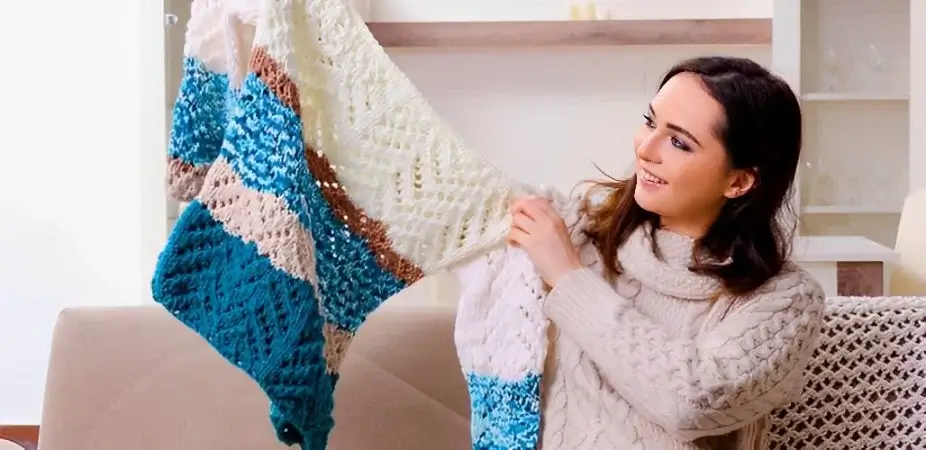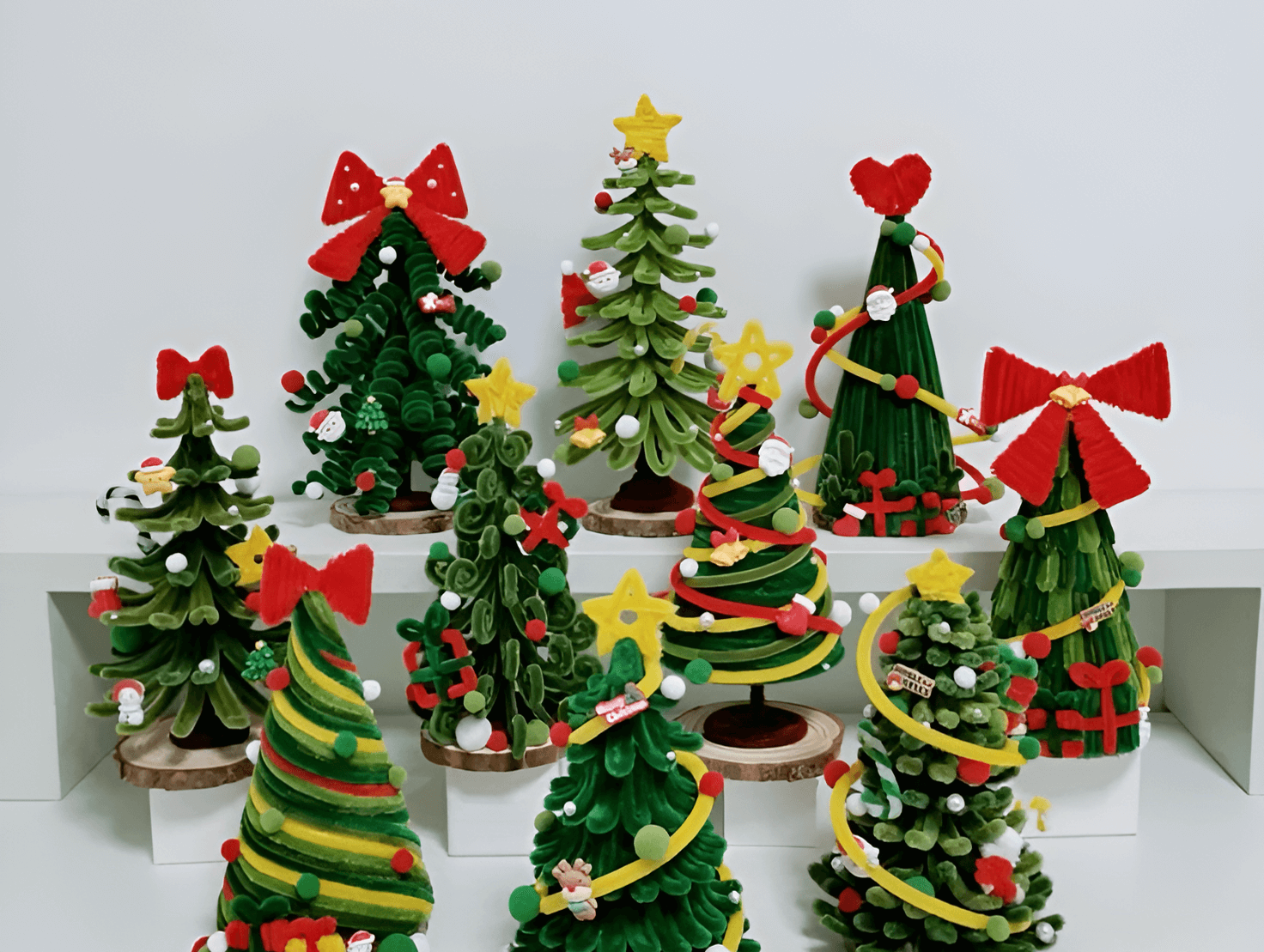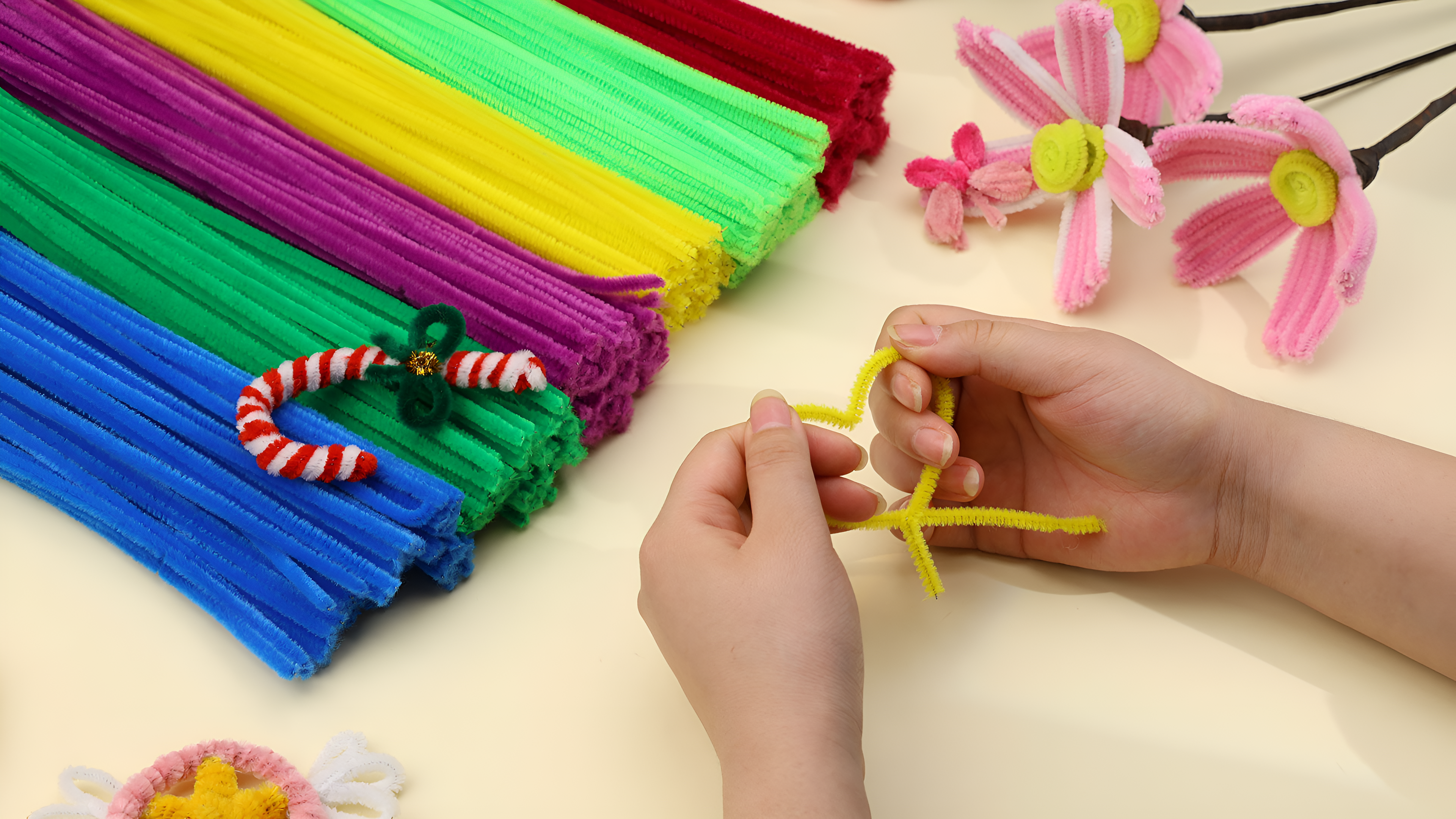Category
- No categories


Crocheting is a fun and relaxing hobby that allows you to create beautiful and useful items with just a hook and some yarn. Whether you want to make a cozy blanket, a cute hat, a stylish scarf, or a personalized gift, crocheting can help you achieve your creative goals. But how do you get started with crocheting? What kind of yarn should you use? How do you make basic stitches and patterns? In this blog, we will answer these questions and more, and guide you through the basics of crocheting with yarn. By the end of this blog, you will be able to:
- Choose the right yarn and hook for your project
- Make a slip knot and a foundation chain
- Work in single, double, and half double crochet stitches
- Change colors and join new yarn
- Finish and weave in ends
- Follow a simple crochet pattern
Ready to learn how to crochet with yarn? Let’s begin!
Table of Contents
Choosing the Right Yarn and Hook
The first step to crocheting with yarn is to choose the right yarn and hook for your project. There are many types of yarn available, such as cotton, wool, acrylic, bamboo, and more. Each type of yarn has its own characteristics, such as weight, texture, durability, and washability. You should consider these factors when choosing a yarn for your project, as well as your personal preference and budget.
The weight of the yarn refers to how thick or thin it is. Yarn weight ranges from lace (very thin) to super bulky (very thick). The weight of the yarn affects the size and drape of your finished item, as well as how fast you can crochet it. Generally, thinner yarns are more suitable for delicate and intricate projects, such as lace, doilies, and shawls. Thicker yarns are more suitable for warm and cozy projects, such as blankets, hats, and scarves.
The texture of the yarn refers to how smooth or rough it feels. Some yarns are very soft and smooth, such as merino wool, alpaca, and silk. Some yarns are more rough and scratchy, such as hemp, jute, and sisal. The texture of the yarn affects the comfort and appearance of your finished item, as well as how easy it is to work with. Generally, softer yarns are more comfortable and pleasant to wear and touch, but they may also be more prone to pilling and shedding. Rougher yarns are more durable and sturdy, but they may also be more irritating and stiff.
The durability of the yarn refers to how well it holds up to wear and tear. Some yarns are very durable and resilient, such as nylon, polyester, and acrylic. Some yarns are more delicate and fragile, such as mohair, angora, and cashmere. The durability of the yarn affects the longevity and quality of your finished item, as well as how often you need to wash and care for it. Generally, durable yarns are more suitable for items that will be used frequently and exposed to elements, such as bags, rugs, and toys. Delicate yarns are more suitable for items that will be used occasionally and treated gently, such as sweaters, shawls, and gloves.
The washability of the yarn refers to how well it can be cleaned and maintained. Some yarns are very washable and easy to care for, such as cotton, acrylic, and bamboo. Some yarns are more sensitive and require special attention, such as wool, silk, and linen. The washability of the yarn affects the convenience and hygiene of your finished item, as well as how often you need to wash and care for it. Generally, washable yarns are more suitable for items that will get dirty and need frequent washing, such as dishcloths, baby items, and socks. Sensitive yarns are more suitable for items that will stay clean and need infrequent washing, such as hats, scarves, and blankets.
The hook is the tool that you use to crochet with yarn. Hooks come in different sizes, shapes, and materials. The size of the hook is measured by the diameter of the shaft, which is the part that holds the loop of yarn. Hook sizes range from 0.6 mm (very small) to 25 mm (very large). The size of the hook affects the size and tension of your stitches, as well as how fast you can crochet. Generally, smaller hooks are more suitable for thinner yarns and finer projects, such as lace, doilies, and amigurumi. Larger hooks are more suitable for thicker yarns and bulkier projects, such as blankets, rugs, and baskets.
The shape of the hook refers to the design of the head, which is the part that catches the yarn and pulls it through the loops. Hooks can have different head shapes, such as tapered, inline, or round. The shape of the hook affects the ease and comfort of crocheting, as well as the appearance of your stitches. Generally, tapered hooks are more suitable for beginners and tight crocheters, as they are easier to insert and pull through the loops. Inline hooks are more suitable for experienced and loose crocheters, as they are more precise and consistent. Round hooks are more suitable for crocheters who prefer a balance between ease and precision.
The material of the hook refers to what the hook is made of, such as metal, wood, plastic, or bamboo. The material of the hook affects the weight and feel of the hook, as well as how it interacts with the yarn. Generally, metal hooks are more durable and smooth, but they may also be heavier and colder. Wood hooks are more lightweight and warm, but they may also be more fragile and rough. Plastic hooks are more flexible and colorful, but they may also be more slippery and noisy. Bamboo hooks are more eco-friendly and natural, but they may also be more prone to splintering and breaking.
To choose the right yarn and hook for your project, you should follow the recommendations of the pattern or the yarn label. Most patterns will tell you what type and weight of yarn and what size of hook to use. Most yarn labels will tell you what weight of yarn and what size of hook to use. You can also experiment with different combinations of yarn and hook to find what works best for you and your project.
Making a Slip Knot and a Foundation Chain
The second step to crocheting with yarn is to make a slip knot and a foundation chain. A slip knot is the first loop that you make on your hook. A foundation chain is a series of loops that you make by chaining, which is the most basic crochet stitch. The foundation chain serves as the base for your project, and determines the width and shape of your item.
To make a slip knot, follow these steps:
- Take the end of your yarn and make a loop, crossing the yarn over itself.
- Insert your hook into the loop from front to back, and grab the yarn that is attached to the ball.
- Pull the yarn through the loop, and tighten the knot by pulling both ends of the yarn.
- Adjust the size of the loop by sliding the knot along the hook. The loop should be snug but not tight on the hook.
To make a foundation chain, follow these steps:
- Hold the hook in your right hand (if you are right-handed) or your left hand (if you are left-handed), and the yarn in your other hand. Wrap the yarn around your fingers to create some tension.
- Yarn over, which means to bring the yarn over the hook from back to front.
- Pull the yarn through the loop on the hook, and drop the old loop off the hook. This is one chain stitch.
- Repeat steps 2 and 3 until you have the desired number of chain stitches. The number of chain stitches depends on the pattern or the size of your project. You can count the chain stitches by counting the bumps or Vs on the top of the chain.
- Do not count the loop on the hook as a chain stitch.
- Working in Single, Double, and Half Double Crochet Stitches
- The third step to crocheting with yarn is to work in single, double, and half double crochet stitches. These are the most common and basic crochet stitches that you will use to create different patterns and textures. To work in these stitches, you will need to insert your hook into the chain stitches or the stitches of the previous row, and make new loops on your hook.
To work in single crochet, follow these steps:
- Insert your hook into the second chain from the hook, or the next stitch of the previous row, under both loops of the stitch. You should have two loops on your hook.
- Yarn over and pull the yarn through both loops on the hook. You should have one loop on your hook. This is one single crochet stitch.
- Repeat steps 1 and 2 until you reach the end of the row or the round. To start a new row, chain one and turn your work. To start a new round, join the last stitch to the first stitch with a slip stitch.
To work in double crochet, follow these steps:
- Yarn over and insert your hook into the third chain from the hook, or the next stitch of the previous row, under both loops of the stitch. You should have three loops on your hook.
- Yarn over and pull the yarn through the first two loops on the hook. You should have two loops on your hook.
- Yarn over and pull the yarn through the last two loops on the hook. You should have one loop on your hook. This is one double crochet stitch.
- Repeat steps 1 to 3 until you reach the end of the row or the round. To start a new row, chain two and turn your work. To start a new round, join the last stitch to the first stitch with a slip stitch.
To work in half double crochet, follow these steps:
- Yarn over and insert your hook into the second chain from the hook, or the next stitch of the previous row, under both loops of the stitch. You should have three loops on your hook.
- Yarn over and pull the yarn through all three loops on the hook. You should have one loop on your hook. This is one half double crochet stitch.
- Repeat steps 1 and 2 until you reach the end of the row or the round. To start a new row, chain one and turn your work. To start a new round, join the last stitch to the first stitch with a slip stitch.
- Changing Colors and Joining New Yarn
- The fourth step to crocheting with yarn is to change colors and join new yarn. Changing colors and joining new yarn allows you to create different patterns and designs with your crochet project. You can change colors and join new yarn at the end of a row or a round, or in the middle of a row or a round.
To change colors and join new yarn at the end of a row or a round, follow these steps:
- Work the last stitch of the row or the round with the old color until you have two loops on the hook.
- Drop the old color and pick up the new color. Yarn over with the new color and pull it through the two loops on the hook. You should have one loop on the hook with the new color.
- Cut the old color, leaving a tail of about 6 inches. Tie a knot with the old and new colors to secure them. You can weave in the ends later.
- Continue working with the new color as normal.
To change colors and join new yarn in the middle of a row or a round, follow these steps:
- Work the stitch before the color change with the old color until you have two loops on the hook.
- Drop the old color and pick up the new color. Yarn over with the new color and pull it through the two loops on the hook. You should have one loop on the hook with the new color.
- Leave the old color hanging at the back of your work. You can pick it up later when you need it again.
- Continue working with the new color as normal.
- Finishing and Weaving in Ends
- The fifth step to crocheting with yarn is to finish and weave in ends. Finishing and weaving in ends is the final step that completes your crochet project and makes it look neat and tidy. You should finish and weave in ends when you have completed all the rows or rounds of your project, or when you have changed colors or joined new yarn.
To finish and weave in ends, follow these steps:
- Cut the yarn, leaving a tail of about 6 inches.
- Pull the yarn through the last loop on the hook and tighten it to make a knot. This is called fastening off.
- Thread the yarn tail into a yarn needle and weave it in and out of the stitches on the wrong side of your work. You can follow the shape of the stitches or make a zigzag pattern. Make sure to weave in the end securely, but not too tightly, to avoid puckering or distorting your work.
- Repeat steps 2 and 3 for any other yarn tails that you have.
- Trim any excess yarn close to your work.
Following a Simple Crochet Pattern
The sixth and final step to crocheting with yarn is to follow a simple crochet pattern. A crochet pattern is a set of instructions that tells you how to make a specific item with crochet. A crochet pattern can be written or charted, or both. A written pattern uses abbreviations and symbols to describe the stitches and techniques that you need to use. A charted pattern uses a grid of symbols to represent the stitches and techniques that you need to use.
To follow a simple crochet pattern, you should:
- Read the pattern carefully and understand the abbreviations and symbols that it uses. You can find a list of common crochet abbreviations and symbols online or in a crochet book.
- Check the gauge of the pattern, which is the number of stitches and rows that you should have in a certain measurement. You can check the gauge by making a small sample of the pattern and measuring it with a ruler. If your gauge is too big or too small, you may need to adjust your hook size or your tension.
- Follow the instructions of the pattern, row by row or round by round. Pay attention to the punctuation and brackets that indicate the repeats and groups of stitches. Use a stitch marker or a safety pin to mark the beginning of each row or round, or any other important point in the pattern.
- Check your work frequently and compare it with the picture or the diagram of the pattern. If you find any mistakes, you can undo your stitches and correct them. If you have any questions or doubts, you can look for online tutorials or videos that explain the pattern or the technique that you need.
Crocheting with yarn is a rewarding and enjoyable hobby that can help you express your creativity and make beautiful and useful items. In this blog, we have learned the basics of crocheting with yarn, such as:
- Choosing the right yarn and hook for your project
- Making a slip knot and a foundation chain
- Working in single, double, and half double crochet stitches
- Changing colors and joining new yarn
- Finishing and weaving in ends
- Following a simple crochet pattern
We hope that this blog has inspired you to start crocheting with yarn and to explore the many possibilities that this craft offers. Happy crocheting!
FAQS
What are some good yarns for beginners?
Some good yarns for beginners are medium weight yarns, such as worsted or aran, that are smooth, solid-colored, and easy to work with. You can also look for yarns that are labeled as beginner-friendly, such as acrylic, cotton, or wool blends.
What are some good hooks for beginners?
Some good hooks for beginners are hooks that are comfortable to hold, easy to use, and match the weight of your yarn. You can also look for hooks that are labeled as beginner-friendly, such as aluminum, plastic, or bamboo hooks.
How do I know how much yarn I need for my project?
The amount of yarn that you need for your project depends on the size, shape, and stitch pattern of your item, as well as the weight and yardage of your yarn. You can estimate the amount of yarn that you need by using a yarn calculator online or in a crochet book, or by following the recommendations of the pattern or the yarn label.
How do I join two pieces of crochet together?
There are different ways to join two pieces of crochet together, such as sewing, crocheting, or using buttons or zippers. The method that you choose depends on the type, shape, and style of your pieces, as well as your personal preference. You can find online tutorials or videos that show you how to join two pieces of crochet together using different methods.
Written by Luwans
Best offers
Join Risk Free
15 days refund
100% Safe
Secure Shopping
24x7 Support
Online 24 hours
Best Offers
Grab Now
Free Shiping
Over $50
Know Us

At Luwans, we believe in the power of creativity. Our passion lies in providing artists, crafters, and hobbyists with the highest quality materials to bring their ideas to life.
Read MoreCreative Trends




Leave a Reply